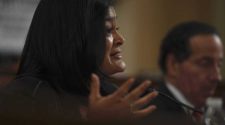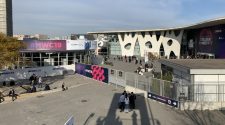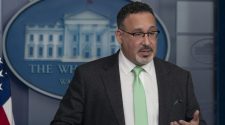(CNN) — Dubai in 1993 was a world away from the global capital of today.
In other words: put the Emirates on the map.
Simon Crispe, Atkins’ managing director in the Middle East at the time, recalls being asked “to provide the UAE with the powerful visual symbol of the same significance Sydney’s Opera House is to Australia or Paris’ Tour Eiffel is to France.”
An international team of architects spent the next seven years under a veil of secrecy creating the man-made island and 321-meter tall building.
The Burj al Arab (Arabian Tower) opened its doors in 1999, and in the following two decades became a magnet for the global elite. The hotel is now a byword for the height of luxury from its palatial suites to rare sharks housed in the aquarium.
But one feature has arguably done the most to forge the Burj’s reputation.
Taking the aerial route
Suspended 212 meters above sea level, the hotel’s helipad juts out precariously from the distinctive sail shape of the building.
“The main challenge was ensuring that the helipad was structurally sound and supported the overall architecture of the hotel,” says the Burj al Arab’s managing director Anthony Costa. The 24-meter wide helipad can accommodate a maximum weight of 7.5 tons, he says.
“The helipad had to meet both structural and safe landing criteria,” says Crispe. “It needed to ‘float’ visually and we only wanted a minimal visible supporting steelwork.”
The helipad’s principle function is as part of the hotel’s concierge service. Guests can choose to be picked up from the airport in a Rolls Royce, or take advantage of a helicopter transfer service.
The aerial route is a popular option says Costa, with many arrivals and departures each month by helicopter.
Legendary stunts
Beyond its basic function, the helipad is better known as a location for stunts that range from death-defying to merely awesome.
Many more stunts are rejected, according to Costa. “Every requested stunt is evaluated from logistical, health and safety and feasibility points of view before it goes ahead,” he says.
Party venue
Stunts made the helipad world-famous, but the hotel has also introduced safer ways to enjoy it.
The location is also hired out for private parties with bespoke trimmings. Costa says his favorite helipad moment came with a guest’s 50th birthday last year.
“We repainted the helipad to read ‘Happy Birthday’ with her name, which she could see from the helicopter as she landed,” he recalls.
Such lavish occasions and expenditure might seem frivolous, but as one of Dubai’s great icons, there is a responsibility to showcase spectacle and grandeur.
As Costa puts it, the helipad events are “elevating Dubai and its reputation for delivering spectacular experiences.”
Government ministries often partner with the hotel to deliver helipad events, and use it heavily in promotional campaigns.
The Burj al Arab was first commissioned with the intention of establishing Dubai and the UAE on the global map.
Twenty years on from its inauguration that ambition has been realized — with no little help from the world’s most famous helipad.

















